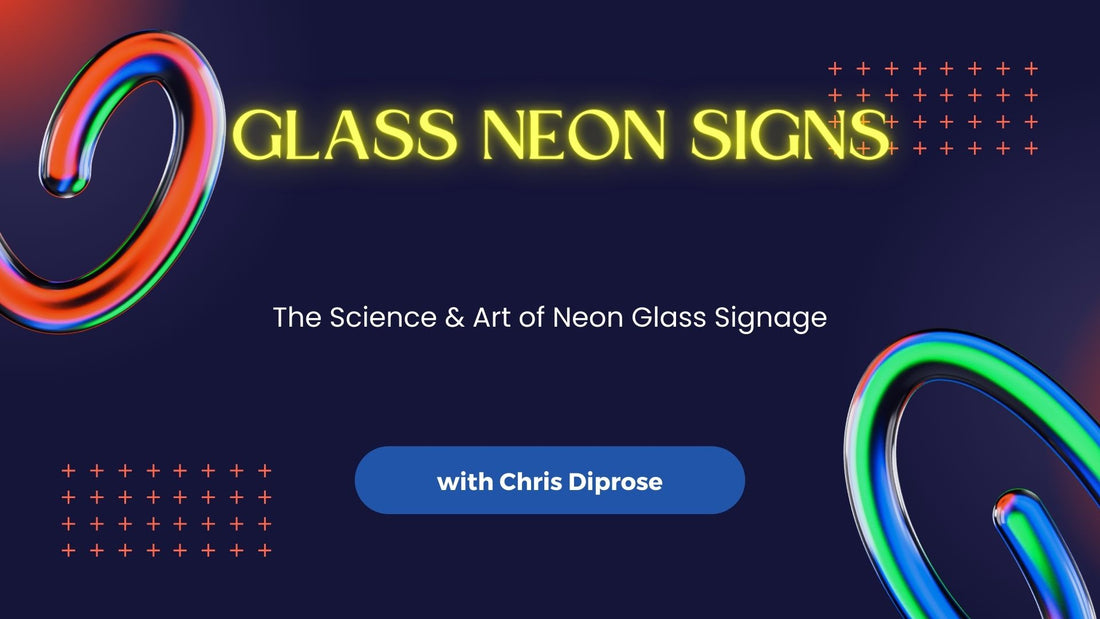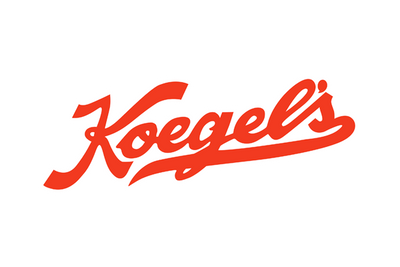
Glass Neon Signs - The Science & Art of Neon Glass Signage
Chris DiproseShare
Neon signs are a part of the cityscape, lighting up the night with their brightness. Custom neon signs have been around for over a hundred years, adding something special to businesses, events, and home decor. This post will help you understand the nitty-gritty of glass neon signs and how they work. Imagine your company name or logo glowing in splendid neon, leaving a lasting impression on passersby.
- Glass neon signs are complex to create - they require design and manufacturing by artisans.
- Glass neon signs require specialists to install and maintain.
Lets learn more about glass neon signs - the science and art of how they are created and what the future holds.
How Glass Neon Signs are Made
Designing Glass Neon Signs
Designing traditional neon signs is a delicate balance of art and engineering. Custom neon signs allow you to tailor the design to your needs, making them a unique and bright advertising solution for your business. Artisans heat and bend soft lead glass, shaping it into the desired shapes and letters. This requires a high degree of skill and precision, as the bent glass tubes will be the core of the neon sign. You can also use a stand to place a neon sign for easy installation and enhanced visibility.
Once the glass tubes are shaped, they are filled with neon or other noble gases, depending on the color. Iron electrodes encased in a glass jacket are welded to both tube ends. These electrodes are connected to a transformer with a high-voltage cable. The glass tubes are then mounted onto a backing panel, and the neon sign is complete.
The Science of Glass Neon Signs
Neon signs work on the principles of physics and chemistry. The neon gas inside the tubes is a noble gas that doesn’t react chemically under normal conditions. But when electricity is applied, the gas is energized and reacts.
The alternating current through the electrodes is enough to ionize the neon atoms inside the tube. The free electrons from this ionization process are attracted to the positive electrode, and the positively charged ions to the negative electrode. As these charged particles collide with each other, they gain energy. When the ionized atoms regain their electrons and become neutral again, they emit a photon – a particle of light. This is what gives neon signs their bright, colored glow.

Custom Neon Signs - Options
With neon signs, the options are endless. From the letters and design to the color of the light, you can create a sign tailored to your needs. Some manufacturers even allow you to size the sign to fit your requirements. The only limitation is the physical properties of the glass and gases used.
Custom neon signs are versatile and leave a lasting impression on customers through their visuals and uniqueness.
Installation
When installing a neon sign, there are several things to consider. Firstly, having neon signs delivered to your door is a big plus. What’s the purpose of the sign? If it’s to attract customers to a business, it should be in a high-visibility area. For home decor, it can be in a room that could use some extra light and decoration. And safety should also be considered. If the sign is in an area where children will be, it should be out of their reach to prevent accidents.
Energy Consumption
Neon signs use a fair amount of power, about the same as a standard household light bulb (60W-100W). However, modern neon signs come with energy-efficient transformers that can reduce power consumption.
Lifespan of Neon Signs
Neon signs can last between 8 and 15 years, making them a durable option for businesses and individuals. However, the lifespan can be extended by taking care of the sign. This means not leaving the sign on for extended periods without supervision, as this can expose it to electrical surges.
Safety
Glass neon signs are generally safe, but it’s worth noting that they produce heat due to the nature of their operation. This is from the kinetic energy generated from the collisions of atoms, electrons, and ions inside the tubes. However, most modern neon signs have safety features to prevent overheating.
However, the glass tubing will get too hot, so don’t touch the sign for at least an hour after it’s turned off.
Neon Colour Spectrum
Neon signs are famous for their bright colors. The color of a neon sign is determined by the gas used. Pure neon gas gives off a red-orange color. However, other noble gases like helium, argon, krypton, and xenon can be used to produce different colors. The inside of the glass tube can be coated with phosphorescent materials to add more colors.

Visual Appeal
Picture a slogan or company logo glowing in neon. Neon signs have a unique visual appeal, which is why they’re popular with businesses and individuals. Their bright colors and ability to form intricate designs make them a visual treat to any space. Whether it’s a slogan, a company logo, or a simple decoration, neon signs are a great way to make a statement.
Neon in Pop Culture
Neon signs have a long history in pop culture. From the Las Vegas strip to the neon streets of Tokyo, these glowing signs have been featured in countless movies, music videos, and artworks. They’re symbols of nightlife, urban living, and modernity.
The Future of Neon Signs
Technology will continually evolve, but traditional neon signs will always be in demand. Their glow and vintage charm set them apart from modern LED neon sign alternatives. As long as there’s a need for bright and attention-grabbing signage, the art and science of neon signs will continue to exist.
Conclusion
Glass neon signs are more than just decorations. They are products of design and science, a mix of art and technology. The downsides are explained in other blog posts, but glass neon is an old technology. Traditional glass neon signs will always be in our hearts, whether they illuminate a business, add character to a room, or are featured in a movie.
For more information or to discuss your neon sign needs, please contact us. Alternatively, you can use your browser to see all of the neon signs we are actively selling in our collections and buy directly online.

Glass Neon Signs FAQ
Do you repair glass neon signs?
Some glass neon signs can be repaired, but many others cannot. In the case of a glass neon sign needing repair, we always assess the risk - after all, the neon sign has failed for a reason, so we try to understand better why. Likely, the sign cannot be repaired without a significant overhaul for electrical faults and issues - often more expensive than replacing the sign. The main reason for this is liability - once we repair a neon sign, we are liable for any issues afterward, so we are very careful about what signs we work on.
Can a glass neon sign be customized?
Yes, we have a service to create custom glass neon signs. Customers can use a custom design, logo, or image and choose the neon sign's font, colors, and size.
If you want a custom neon sign, please contact us using our custom quote form.
How do you get the colors in a glass neon sign?
Specific colors are achieved by mixing and matching the type of gas used in the glass tube section. Every mix of gas results in a different color. For example, neon elicits a bright red. We can also coat the inside of the glass tube to elicit other colors.







